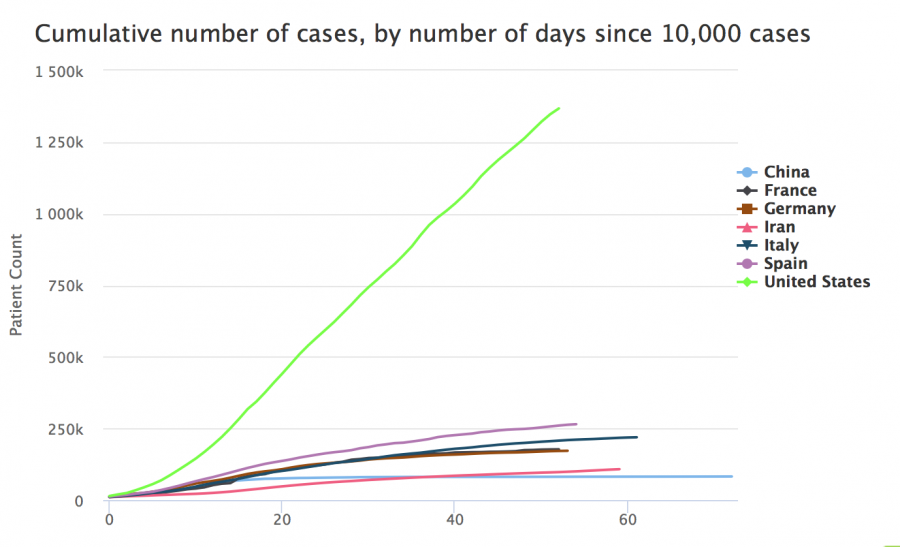Coronavirus cases in the U.S. reaches 1.1 Million
Screenshot taken from Worldometer
This graph compares the total number of cases reached for COVID-19 between seven countries.
May 11, 2020
Since Jan. 1, 2020, when the first case of coronavirus emerged in the United States, the situation has worsened drastically. In the short span of three and a half months, 1.1 million people have been infected.
To compare, let’s look at the old epicenter of the pandemic: China. This country has a significantly higher population and population density, with cities that have more people living in them than most of America’s states. There are 80,000 infected and no significant growth in infections since early March.
How does an organized country like America with cleaner streets, public healthcare programs, and the highest GDP in the world handle a pandemic worse than the disease’s epicenter?
America’s slow legislative process contributed to a slow response to the disease, while a concept of “only wear face masks if you’re sick” only expedited the process of infections.
China’s initial response was not very speedy either. The local officials in Wuhan tried to cover up the cases, only for the civilians themselves to post about the mysterious disease on the social platform “WeChat”. After the news got out, the Chinese government patched together a response that dealt with the situation that enforced a policy in most major cities that each citizen could only leave their house three times a week, requiring a pass to exit their apartment building. China’s coronavirus treatment is also free, although it costs about $8,000 for each patient in the U.S.
America’s lack of a response did not help contain the disease at all. Only recently were methods advocating wearing face masks were implemented, though the policy of closing schools and other public facilities were implemented much sooner.
Whether the pandemic will worsen or improve from now on is difficult to say. The cure effort for coronavirus is going slowly, with only a couple of Chinese provinces beginning research on a cure. Some sources say that the pandemic is slowing, while others state that it will last for two years or more. The future is uncertain, but we must stay cautious and continue to practice social distancing. FCPS has taken measures to minimize human interaction, with online classes for the rest of the year as many of us know. CollegeBoard has also delegated the AP’s to an online test that consists of only free response, emphasizing the danger that COVID-19 brings, and that it should be treated with caution.






